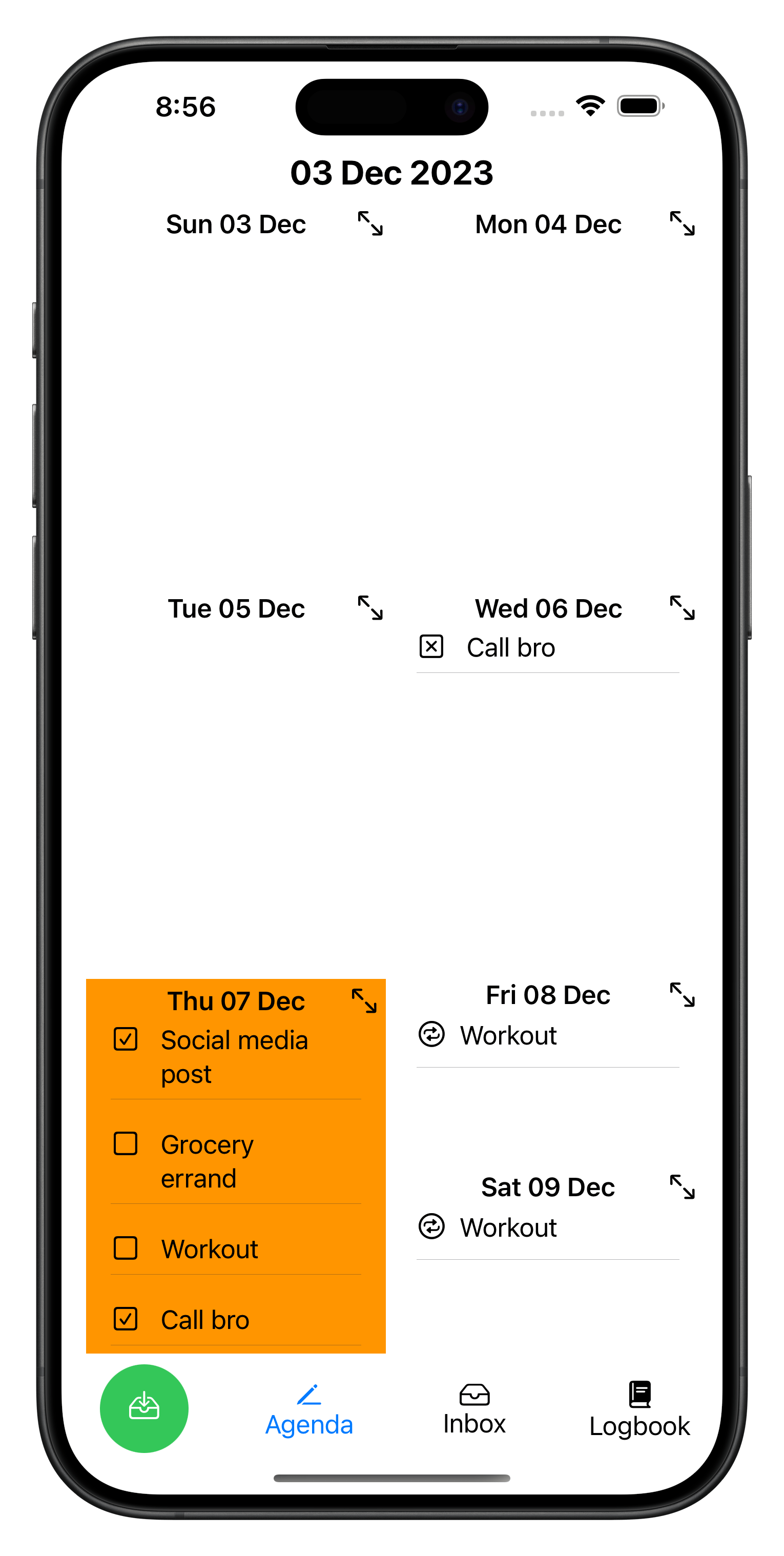1. Built-in inbox
When an idea comes to me, I don’t just let it sit in my head until it fades away. Instead, I open up the app and add it to my inbox. It helps me not forget it. Moreover, it takes away the stress of forgetting it — so I can better deal with the things I’m doing on the moment instead. The important thing to remember here is that this is not a to-do, but only a goal. A goal that at first glance could feel like biting more than you can chew. Once the idea is in my inbox, I need come back to it later to “process it.”
2. No micromanaging
From my personal experience, I found that trying to micromanage your day by plugging tasks into 5 min time-slots makes the process too tedious. You do it for a week, perhaps two, they you get tired and stop. Or something happens to mess up your schedule and you don’t have time to do it that week. You promise to yourself you’ll start doing it again, but you never do. Typically calendar apps, task management apps, journaling apps, todo apps, etc. tend to get too granular in the management of your day. They also get too granular in the amount of details they work with (i.e. GPS location, contacts, emails, delegation procedures, etc.) That can work when you’re working a corporate job and your boss is breathing down your neck. If you don’t fill out all the fields, you get fired. But you’re not going to fire yourself. You need a way of keeping on top of your life that is not overly tedious. The effort of micromanaging your day in 5 mins intervals is too great of a cost to be a viable long term solution.
3. Weekly calendar
At the start of every week, I populate my weekly calendar (still in the same app) with actionable steps generated from my inbox. Depending on my availability and the nature of the task, I will decide that this gets done on Monday, that on Tuesday…and so on. Every morning, I check the app and I know what needs to get done that day(and how!)
4. Reflection
When I complete a task, I leave a note in the details section of that task. This could be about how quickly I managed to get it done, what pitfalls I had to overcome, or how it could have been done better and/or faster. Or, if I couldn’t get it done, why. These notes build up over time and form a journal of things I’ve done in the past. Later, I can go over them and notice patterns of how I’m falling short of my own expectations. Seeing yourself in third person like that can bring great revelations you didn’t know about yourself. With that knowledge, I can adjust the way I do things to make my life easier in the present and future. This is perhaps the most important step — reflection.


Leave a Reply